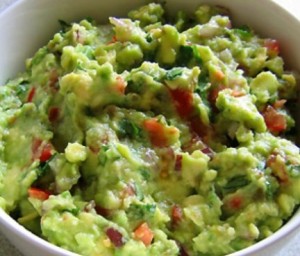American researchers report fresh salsa and guacamole often contain diced raw produce, are often made in large batches, and are often poorly refrigerated, which may make them prone to contamination that can cause foodborne illness.
The safety of salsa and guacamole is increasingly important as these foods gain popularity. Since 1973, local, state, and territorial health departments  have voluntarily reported foodborne disease outbreaks to the Centers for Disease Control and Prevention’s Foodborne Disease Outbreak Surveillance System (FDOSS) using a standard reporting form. FDOSS used paper-based reporting for 1973–1997 and switched to electronic reporting for 1998–2008.
have voluntarily reported foodborne disease outbreaks to the Centers for Disease Control and Prevention’s Foodborne Disease Outbreak Surveillance System (FDOSS) using a standard reporting form. FDOSS used paper-based reporting for 1973–1997 and switched to electronic reporting for 1998–2008.
We reviewed all reports of outbreaks during 1973–2008 in which salsa or guacamole was reported as a vehicle. We found 136 outbreaks in which salsa or guacamole was reported as a possible vehicle, which resulted in 5,658 illnesses.
Of these 136 salsa- or guacamole-associated (SGA) outbreaks additional possible food vehicles were reported for 33 (24%) outbreaks. There were no SGA outbreaks reported before 1984.
Among reported outbreaks, most were caused by norovirus (24%), nontyphoidal Salmonella (19%), and Shigella (7%). Eighty-four percent of outbreaks were caused by foods prepared in restaurants or delis; of these,  19% reported ill foodworkers, and 29% reported improper storage as possible contributing factors.
19% reported ill foodworkers, and 29% reported improper storage as possible contributing factors.
Among all foodborne disease outbreaks with a reported food vehicle during 1984–1997, 26 (0.9%) of 2,966 outbreaks were SGA, and during 1998–2008, 110 (1.4%) of 7,738 outbreaks were SGA. The number of reported foodborne disease outbreaks attributable to salsa or guacamole increased in the United States from 1984 to 2008, especially in later years, and especially in restaurants.
Fresh salsa and guacamole require careful preparation and storage. Focused prevention strategies should reduce the risk of illness and ensure that these foods are enjoyed safely.
Foodborne Pathogens and Disease. April 2013, 10(4): 316-322
Magdalena E. Kendall, Rajal K. Mody, Barbara E. Mahon, Michael P. Doyle, Karen M. Herman, and Robert V. Tauxe
